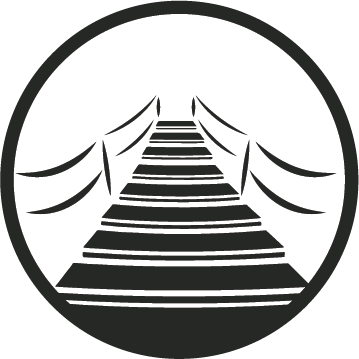On Independence Day 2020, India will complete 74 years of freedom. The breeze of independent India has something wonderful to bestow everyday. But how did India get free? Where does it all start? There are a lot of instances where moments in history fades with time. One of the golden pages of Indian history is Paika Bidroha (Paika Mutiny). This revolt comes in front as the first revolt of Independence by historians. However, the question arises all of sudden what about the Sepoy Mutiny of 1857?
The Sepoy Mutiny was mentioned by Vinayak Damodar Savarkar in 1909 in his book The Indian War of Independence. Considering the political and social situation of that time, nationalist thoughts were straight out rejected by common people to exist in the society and the Sepoy Mutiny roughly took place 50 years before which was a fresh thing that he mentioned in his book and the word of book spread like wildfire. And hence the Sepoy Mutiny unofficially became the First Revolt of Independence.
History of Odisha and Paika Bidroha
Before the British establishment, Marathas were the rulers of Odisha since 1751, in the area of Bengal and Odisha. In 1803, Marathas lost Odisha to the British in Second Anglo Maratha War. Bhonsale king of Nagpur handed over Cuttack to the British after the war. The control over the area of Cuttack came to the British but the nearby area of Khordha(then Khurda) was under King Gajapati.
The king at that point in time was Gajapati Mukunda Deva II (1795-1817). He became a king at a very early age and the control of the kingdom came to Dewan(Principal Advisor) Jaykrushna Mohapatra commonly known as Jay Rajguru. He receives his title of Rajguru as he was the advisor to the king. Also, He was the sole advisor to the king and managed all the administrative works of the kingdom. On the other hand, Jagabandhu Bidyadhar Mahapatra Bharamabar Ray commonly known as Buxi Jagabandhu becomes the army chief to Khordha King. He gets his designation Buxi after his position of chief of Army. Buxi Jagabandhu used to maintain law and order in the kingdom.
Who are the Paikas?
Paika is a colloquial form of the word Padatika or Foot Soldiers. Paikas were the land militia in Odisha under Gajapati and other Kings. They also supported local Princes and Zamindars as armed Militia. In exchange for their services, they would get tax-free land to plow crops and do farming. Paikas also carried out policing activities during peacetime.
Paika Bidroha- Why the Revolt?
British wanted to move the troops via Khordha to wage war against Marathas. King Mukunda Deva II gave permission against the advice of Rajguru in exchange for getting the holy city from British and some cash. King fell in the trap of British and post the war he was paid less than what was offered and as promised by British. Also, he loses the opportunity to get the holy city of Puri. Frustrated and cheated Jay Rajguru made plans to conquer the pilgrim city and attacked British troops with the Paika militia in 1804. Additionally, British troops got wounded at that time.
Further, British Company retaliated very swiftly and ruthlessly and attacked on Khordha Fort. King Mukunda Deva II and Jay Rajguru were hostages and confronted. With a young King, it became easy to get into a house arrest in Puri. Further, the young king withdraws and shift the power to the Company. On the other side, Jay Rajguru took all the blame to himself to save his king, and then he was moved to Medinipur Jail.
Further, the company assassinates the Dewan Jai Rajguru brutally in 1806 by tying him upside down to a tree and then pulling his body by elephants from both sides. It is being said that his body split into two parts vertically.
Paika Bidroha and Sunset Law
The rebel of Jay Rajguru became the fire that gave power to Paika Rebellion. Also, you can say this was the miniature form of Paika Mutiny. As Britishers took control over Khordha, they started imposing land tax and revenues and introduced sunset law. Where if you fail to give the tax before sunset, then the land will be auctioned to other people in Kolkata (Calcutta).
Many Paikas lost their land and rest were snatched by Company as they were pat of rebellion in 1804. People started lending money and got into a trap of debt. This built anger and frustration of local and Paikas against the British.
British company deprived local people of the coastal region of their traditional rights of manufacturing salt. This began the rise in the price of salt and also added tax to it. The leader of the revolt was Buxi Jagabandhu, former general to the armed forces of Khordha King. Britisher kept changing the rule of land tax and Buxi Jagabandhu lost his land to the British. And this made him furious to start the Paika Rebellion.
The British Raj
In March 1817, Buxi and kandhas of Ghumsar attacked company settlement in Banpur and raided them. Government establishment, police stations, treasuries were attacked, looted, and destroyed. British suffered a lot and got many causalities also. In April 1817, rebels attacked Puri and caused considerable destruction to the Company’s property. The success of rebellion inspired other princely states and small territories to join hands with Jagabandhu. Kings of Kujang and Kanika also joined hands.
British got a backup army from Bengal and forced the Paikas to hide in Jungle. Along with Buxi Jagabandhu, Purtibas Patsani, Mir Hayder Ali, Dinabandhu Samantaray Mahapatra, Dama Subbudhi Mangaraj, Samanta Mahadev Chandra Routray, Pindiki Bahubalendra were on the wanted list. They did not stop there and started guerrilla warfare for eight years. Buxi Jagabandhu was convinced to surrender in 1825 and was kept in house arrest till his death in 1829.
Relevance of Paika rebellion in Modern Times
Paika Mutiny was overlooked by historians and from history books, only the locals of the Khordha region know about it. Paika rebellion is the first armed rebellion against the British in India. We can’t say it was the First War of Independence but it has a great significance to contribute to our society as it was fought for years.
According to facts, the rebellion started in 1804 and got into a storm in 1817, continued for eight long years should not go in vain. I am not imposing to remember the names and details of rebels but to know its significance so that we can pass down it to the next generation.
The Paika Bidroha not just shows how wrong the British were but also has relevance in our times. If you find something wrong happening then wake your Paika inside and rebel against it.
Happy Independence Day 2020 from Inugum, to all.
Also, you may like reading Gunjan Saxena- The Kargil Girl Review
Click here Follow us on Instagram for more

A graphic designer by profession, Ashutosh zealously indulges in photography, illustration, and painting. He intends to be a filmmaker and scribes stories in his downtime. Yes, an impassioned wanderlust and part-time foodie too!!
